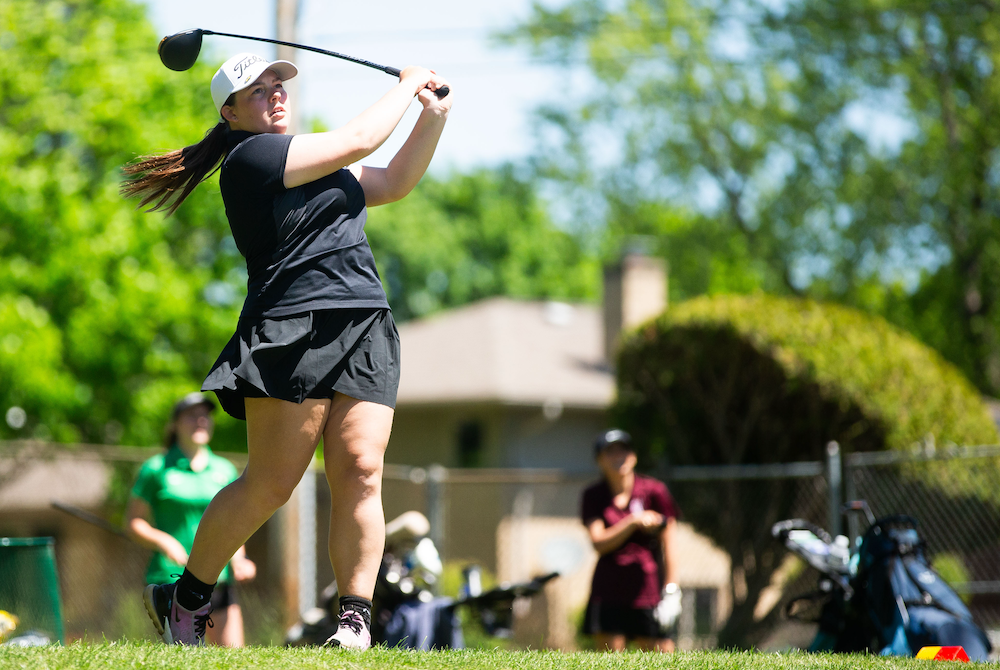
Add, Subtract, Divide, Multiply: MHSAA Not Alone
July 25, 2017
By Rob Kaminski
MHSAA benchmarks editor
This is the third part in a series on MHSAA tournament classification, past and present, that will be published over the next two weeks. This series originally ran in this spring's edition of MHSAA benchmarks.
As the MHSAA faces its most recent classification task with 8-Player Football, and opinions continue to swirl about as to the method, timeframe, location and other procedures, a look around the country provides plenty of company among state association brethren factoring variables into their own equations.
In the Pacific Northwest, the Oregon School Activities Association Football Playoffs are under public scrutiny as leadership ponders a five or six classification format beginning with the 2018-19 school year.
The OSAA has crowned six champions on the gridiron since 2006-07. Many of the state’s smaller schools would like to keep it that way, while larger schools lean toward a five-classification system, citing larger leagues, ease of travel and credibility to state championships as the advantages.
Still others would prefer more than six classes, pointing to safety issues and the opportunity to increase participation numbers as positives.
Moving southeast of Oregon, the Nevada Interscholastic Activities Association recently voted to hold serve on a classification proposal that was volleyed to the membership.
However, changes still could be forthcoming by as early as the 2018-19 season which would add a fifth classification in more populated southern Nevada while allowing northern schools to participate in four classifications. Such divisions could mean no state championship for the fifth class in southern Nevada.
Because of that, the NIAA wants equal numbers of schools in each classification on both ends of the state. Complicating the issue is the fact that the 24 largest schools in the state, by enrollment, are all in Clark County in Southern Nevada.
Across Nevada’s border into Arizona, charter schools are asking the Arizona Interscholastic Association to reconsider classification that was voted upon and approved in September 2015. That agreement called for the largest 33 percent of charter schools by enrollment to be placed in the state’s largest school classification, 3A, the middle 33 percent into 2A, and the smallest 33 percent into 1A.
Less than two years later the charter schools have had a change of heart and have asked to be considered the same as other Arizona public schools and be placed appropriately by enrollment beginning with the 2018-19 school year.
The situation in Arizona further illustrates how the public/private debate that all state associations have faced throughout existence now has the added dynamic of rapidly growing charter schools in today’s educational system, along with virtual school enrollment.
In the nation’s heartland, Nebraska has retooled its football classifications by using enrollment of boys students only in its schools rather than total enrollment. The Nebraska School Activities Association football-playing schools will kick off the 2018 season using this alignment.
Nebraska has three classes of 11-player football, with the smallest class divided in two, Class C-1 and C-2. The state also will have 8-player football for boys enrollments under 47, and the NSAA will sponsor a new 6-player tournament in 2018 for schools with 27 or fewer boys.
“This is a good proposal because some schools have a sizable imbalance between the number of boys and girls, and there’s a large gap (in enrollment) between the largest and smallest schools in Classes A and B,” NSAA executive director Jim Tenopir said. “I think this addresses both of those concerns.”
Swimmers in Georgia, meanwhile, will feel like they are moving with the current, rather than upstream in 2017-18, as the Georgia High School Association recently doubled the number of team championship events from two to four.
Swim enthusiasts can also count on longer days at the finals, as the top 30 finishers from the prelims will advance to the finals instead of 20, and all championship events will have three heats versus two.

Pederson Wins Memorably, Ontonagon Ascends Again in 'Phenomenal' Fashion
By
Jason Juno
Special for MHSAA.com
May 30, 2024
ESCANABA – Big Bay de Noc’s Camryn Pederson carded an 89 on Thursday to win the Upper Peninsula Division 3 Final individual champion and become the first U.P. champion to clear 90 since 2019.
“It feels really good,” she said. “I tried my best to golf as good as I could today, and I’m really glad that it came out the way it was. It’s a good way to end my senior year.”
She said she liked the open course that was low on hazards at the Escanaba Country Club. And she did most things well during her round Thursday.
“I think I minimized my putts. I only one or two-putt most of the holes,” Pederson said. “And my drives were really good.”
She became the second golfer from Big Bay de Noc to win a U.P. Finals individual golf title. Samantha Guertin won Division 3 in 2006 with a 90.
Pederson’s team was seeking its first title since 2005 after finishing runner-up last year, but finished second to a school where girls golf has pretty much always been strong – Ontonagon.
 When the MHSAA first separated the U.P. Finals into separate classes, Ontonagon won the first 10 Class C-D championships, from 1978 to 1987. When Class D got its own U.P. championship tournament, the Gladiators girls won the first four, part of a five-year run of titles from 1994 to 1998. When classifications changed again in 2001, and the name of the smallest group of schools changed from Class D to Division 3, Ontonagon didn’t stop winning, racking up seven more Finals championships.
When the MHSAA first separated the U.P. Finals into separate classes, Ontonagon won the first 10 Class C-D championships, from 1978 to 1987. When Class D got its own U.P. championship tournament, the Gladiators girls won the first four, part of a five-year run of titles from 1994 to 1998. When classifications changed again in 2001, and the name of the smallest group of schools changed from Class D to Division 3, Ontonagon didn’t stop winning, racking up seven more Finals championships.
On Thursday, the Gladiators made it eight wins in Division 3 and 23 overall.
Two of their golfers finished under 100 – runner-up Madyson Pantti carded a 94, and Sam Bailey had a 98. All five finished among the top 10 individuals. Summer Stites’ 100 was good for a fourth-place tie, and Olivia Lockhart and Shayna Stites tied for 10th with 108s.
It was the first U.P. Finals golf championship for all of them, including coach Jim Jessup. The Gladiators’ last team wins came with back-to-back titles in 2018 and 2019.
Ontonagon repeated as Copper Mountain Conference champion this year. The Gladiators had finished third last season at the U.P. Division 3 Final and outshot Big Bay de Noc on Thursday by eight strokes, 400-408. Ontonagon shot 36 strokes better than at last season’s Final, and every golfer shot under 110, which Jessup called “phenomenal.”
“I think the girls just worked really hard to better themselves,” he said. “Their stroke play was better, their consistency was better.”
Pantti improved her score by eight strokes from last year’s Final. The junior will have another shot at an individual championships in 2025, but she had a lot to be proud of this time with her runner-up finish that led the Gladiators to a team title.
“I’m really excited,” she said. “It was something that we’d been looking forward to all season. We’ve done good in a lot of our meets, and I thought this was a really good year for us.”
PHOTOS (Top) Big Bay de Noc's Camryn Pederson follows her drive on No. 4 on Thursday at Escanaba Country Club. (Middle) Ontonagon celebrates its latest girls golf Finals championship. (Photos by Jason Juno.)

